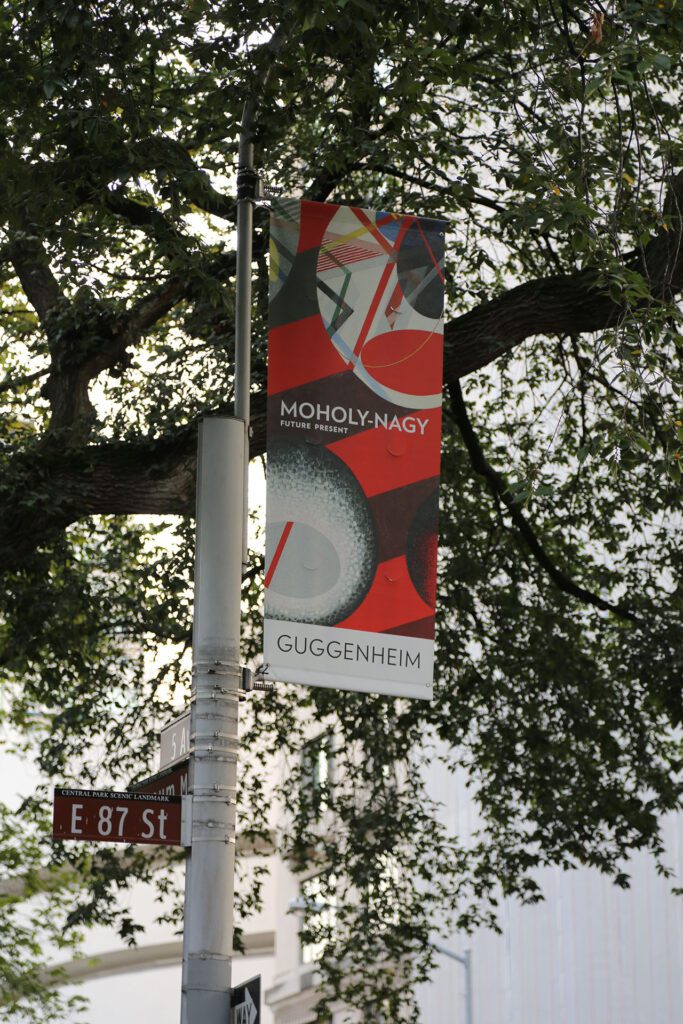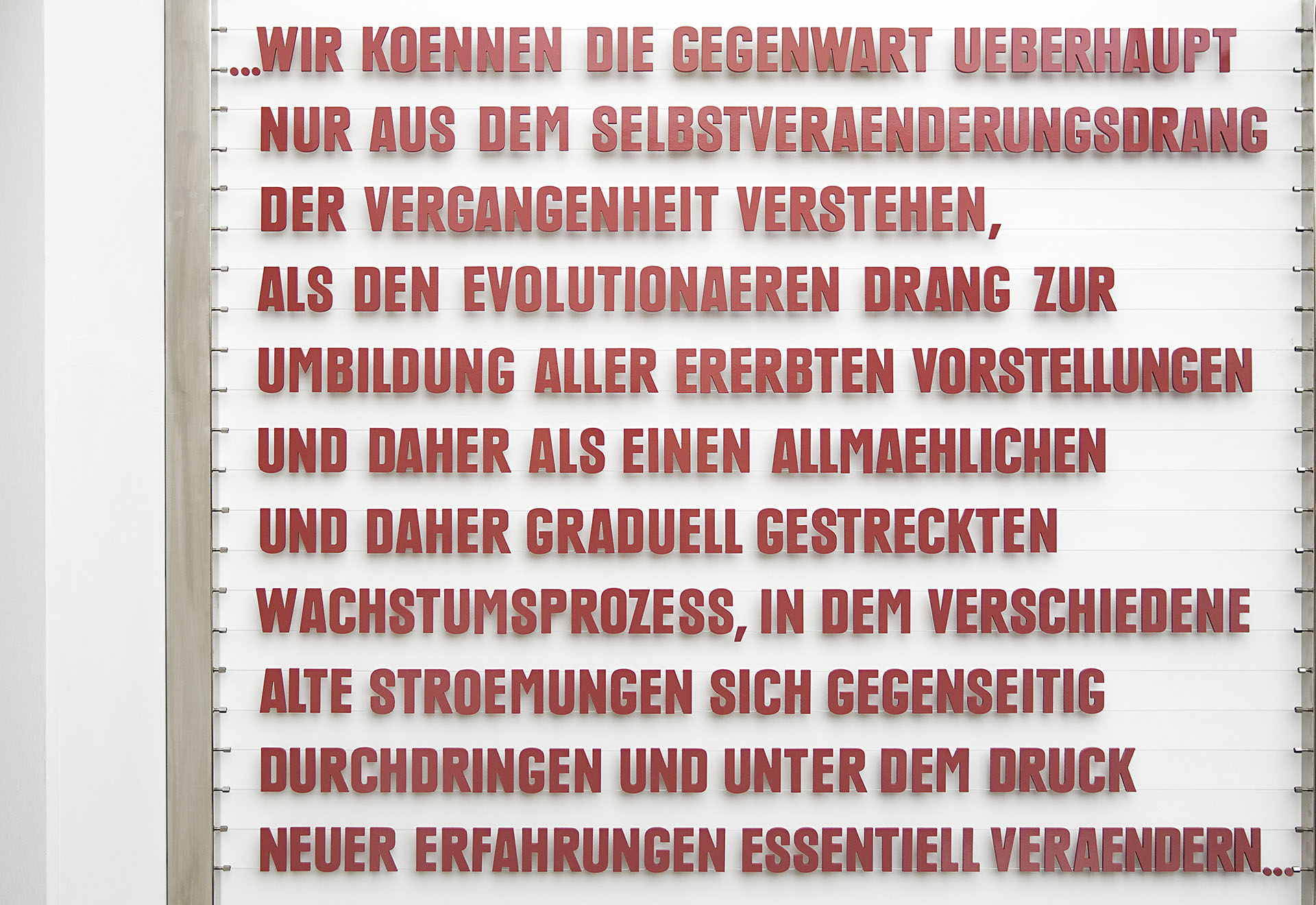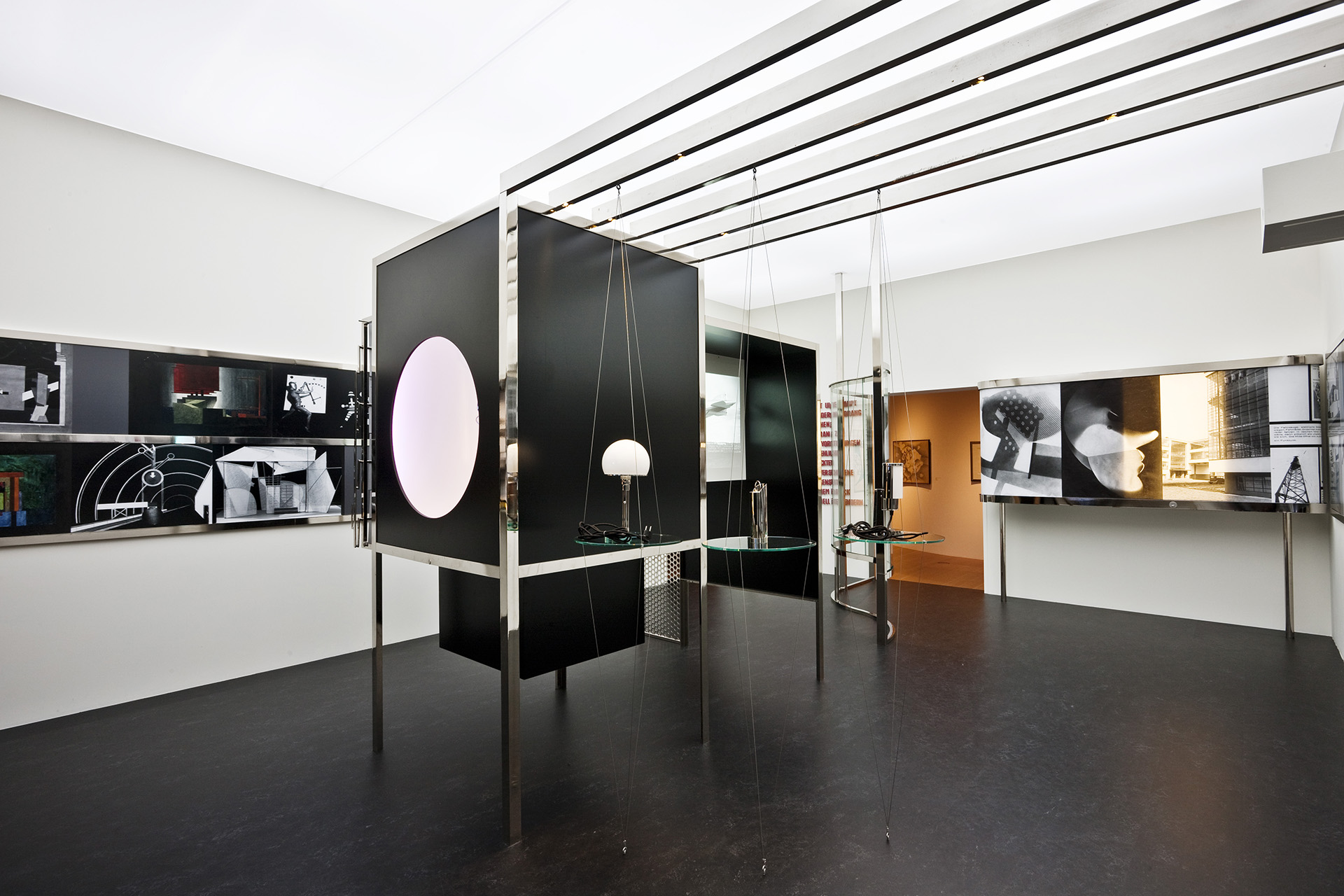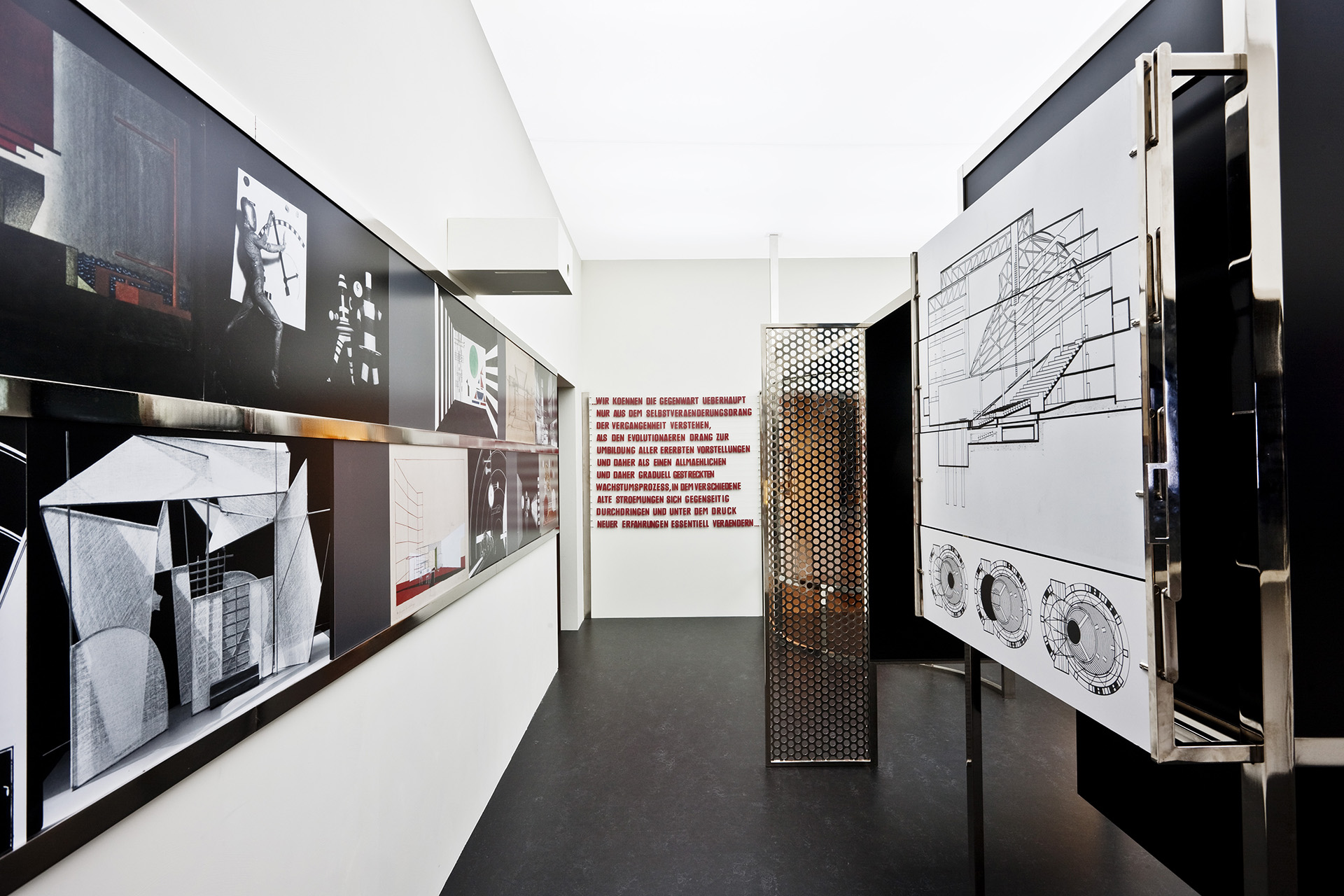
Room of the Present

- Title Room of the Present
-
Client
Kunsthalle Erfurt
Bauhaus Dessau
Schirn Kunsthalle Frankfurt
Van Abbemuseum Eindhoven
Solomon R. Guggenheim New York
Art Institute Chicago
LACMA Los Angeles
- Year 2010-2017
-
Dimensions
45 m2
Artist Space

The “Room of the Present“ has to be considered as a hybrid between a room within a museum and piece of art itself. Planned in 1930 by art historian Alexander Dorner and Bauhaus artist Láslzó Moholy-Nagy but never been realized, the space was supposed to showcase the creative and artistic innovations of the former present:
Architecture, Design and Art / Modern Stage / Design Objects / Sport and Modern Dance / Technology and Transport / Modern Typography / Kinetic Object / Modern Film Stage Lighting / Stage and Theatre Architecture / History in the Present




Kunsthalle Erfurt / Bauhaus Dessau / Van Abbemuseum Eindhoven
Schirn Kunsthalle Frankfurt / Solomon R. Guggenheim Museum
New York / Art Institute Chicago / LACMA Los Angeles


The Room of the Present is an installational-apparatus arrangement with a determined sequence of wall and room installations, that are detected by the visitor in a gradual way, within a sustained room that was created subsequently at the Provinzialmuseum in Hannover (GER). It basically refers to interdependency between visual art, design, architecture and everyday culture at the end of the 1920s.








The center piece of the Room of the Present is the light requisite for an electronic stage (lightprop) by László Moholy-Nagy (1922-30). /// replica, Stedelijk Van Abbemuseum, Eindhoven (NL)



Room of the Present
2010-2017
The “Room of the Present“ has to be considered as a hybrid between a room within a museum and piece of art itself. Planned in 1930 by art historian Alexander Dorner and Bauhaus artist Láslzó Moholy-Nagy but never been realized, the space was supposed to showcase the creative and artistic innovations of the former present. Art and architecture, design, technology and sports of the modern industrial society were to be visualised by the help of a multitude of reproductions such as pictures, films, slides, a kinetic wall of pictures and the lightprop. The intented exhibition space evolved into a laboratory presenting a current cross section of everyday culture. Consequently and aligned to that intention, the motives and imaging technique would have to be adapted to the present, instead “Play Van Abbe Part II“ shows the historical version. Dorner and Moholy-Nagy tried to capture the fast developing industrial society and provoke a standstill among/midst an accelerated and unclear processuality. At the same time they define the current status of modernity, seeming to negate the antagonism of society and celebrating the linearity of the inexorably progress.
The “Room of the Present“, which Dorner originally indicated as “room for the modern artistic design of our presence“, is the first multimedia based room in a museum in the 20th century and thereby an act of pioneering in the history of modern art as well as in the history of museums. The accountable curator of the Provinzialmuseum Hannover realized an exceptional concept: By setting a chronological round tour through his museum, he assigned each room to an artistic cultural time period as for example medieval times or renaissance. The colors of the rooms were color-coordinated according to the tone of the works being presented.
Having an artist on the one hand and a curator with accented scientific ambition on the other, has made the collaboration difficult from the beginning. Their fields of interest have been quite different, which can be seen in their previous projects.Due to those circumstances it was only logical to initiate a cooperation between theory and practise, thus science of art and exhibition design, at an early point in time and not as customary only from a theoretical point of view. This decision implies a general setting of priorities but also demands an active assumption of uninitiated problem statements, thereby both spheres of working and thinking should merge on a result-oriented level. An art scientific respectively artistic analysis phase was followed by an interdisciplinary cooperation between both authors, to be proved successful.
A reconstruction of a Raumkunstwerk of the classical avant-garde is always a bold venture, as a complete documentation in text/word(s) and vision is rarely at hand to realize an implementation that is free of decision making and at low-risk. But even Kurt Schwitters‘ “Merzbau“ or El Lissitzky’s “Prounenraum“ and his Abstract Cabinet demonstrate the difficulty of authentic reconstructions despite specific details on the appearance. The term of authenticity always requires concretion, for it’s a funda-mental meaning of either reconstructing the authenticity on a conceptual or on a formal level. An interpretative access to the historical creation is present at all times, even if the reconstructing designer accurately conform to the spirit of the author or archival items. Based on archive materials, historical scriptures and in local context, the reconstructing engineers realized a draft, that is close to the historical details, but solely in parts, that are sustainable from the present point of view.
Kai-Uwe Hemken + Jakob Gebert
Raum der Gegenwart
2010-2017